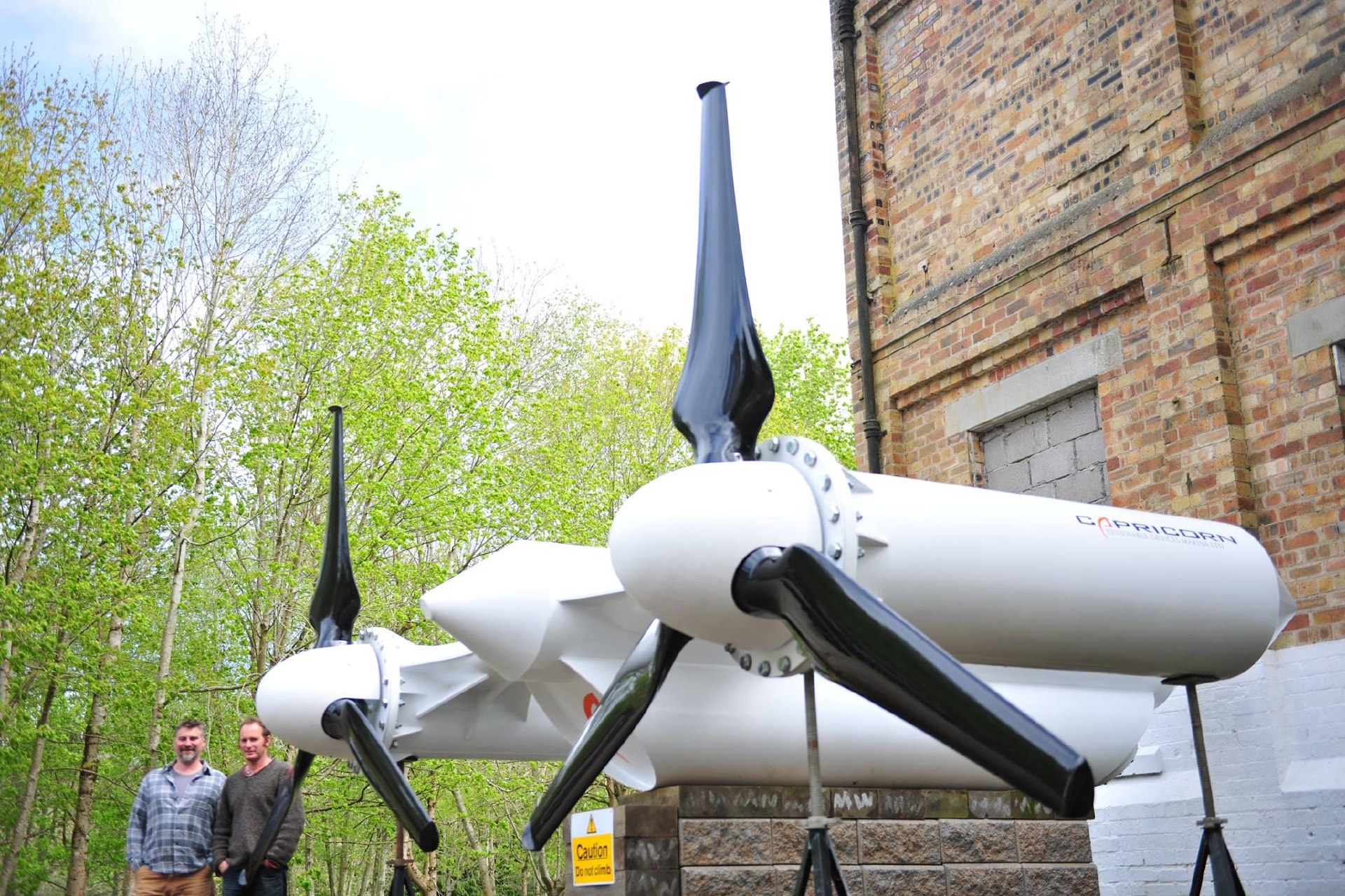Two entrepreneurs are planning to defiantly put their unique tidal energy machine on trial in the Firth of Forth this week without a licence from the Crown Estate.
Dr David Anderson and Dr Charlie Silverton said the demand from the official agency that controls the seabed and foreshore for a fee amounting to £650,000 – even though it was lowered from £2 million – was still far too high.
The Crown Estate disputes their figures .
The engineers said they would on Thursday launch their Capricorn prototype into the Firth of Forth. It will be towed into the estuary by boat and then lowered and tethered to float three metres off the seabed.
Their seven metre-wide tidal stream turbine with twin rotors and a double-chambered central hull for buoyancy will undergo trials and be closely monitored.
If no major problems are identified, they say the full-scale Capricorn machine will be produced for commercial use within 18 months. Measuring 38m across, it will be capable of producing 1.25 megawatts of electricity – enough to power around 1,000 homes.
Once commercially deployed, it is envisaged that arrays of 25 to 30 of the devices could be used to create “tide” farms which would be much more efficient as electricity providers than offshore windfarms.
Dr Anderson and Dr Silverton have, through their firm Renewable Devices Marine Ltd of Roslin, Midlothian, invested £250,000 and more than two years in developing the Capricorn.
They have high hopes for its success and believed their efforts would have been well received in view of the Scottish Government’s desire to achieve environmental and renewable energy targets.
Dr Silverton said: “The Crown Estate’s licence for our project would cost as much as £2 million.
“We disputed this and they reduced the cost to about £650,000 for the lifetime of our project but that is still too high.
“The Capricorn prototype is not much different in size to my four metre yacht which I can moor in the Forth for £80 a year.
“Two tidal energy firms have closed because they could not afford to stay in business. It is no wonder the tidal energy industry has ground to a halt because the Crown Estate is demanding too much.
“On Thursday we will go ahead with the trial and see what the Crown Estate do.”
Dr Anderson said: “Access to the seabed in areas where tidal generation is viable is being made as difficult and expensive as possible for technology developers such as ourselves.
“It practically excludes small technology developers like us and does nothing to nurture a fertile environment for the growth of a new industry which, we are led to believe, is so crucial to our economy.”
The Crown Estate, tasked by an Act of Parliament to raise revenue from the assets it manages and to deliver best value, said they did not recognise the entrepreneurs’ figures.
For tidal energy test and demonstration schemes,a 1 MW project costing around £8 million to build and earns annual income of more than £1m would see the developer would pay up-front costs of £7,400 for exclusive rights to the seabed site.
Once generating power, an annual rent of £2,000 for four years then £4,000 would be applied.
“These fees help cover the costs of our staff assessing and processing the application, taking into account the developer’s approach to pre-planning, consenting, developing, operating and decommissioning.
“We regard these charges as fair and reasonable while consistent with our statutory obligation.”
